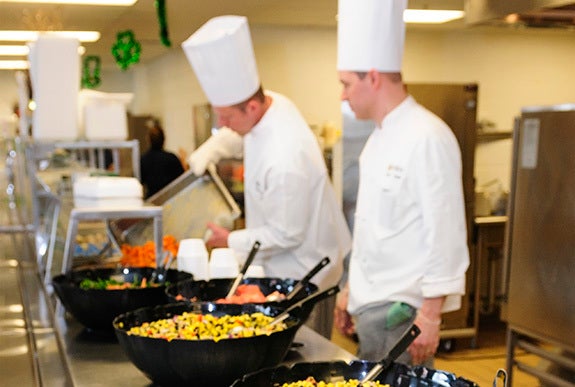
This fall, students will return to school, and cafeterias across the nation will begin to serve on average 30.5 million lunches every single day. A tremendous amount of this food will end up in trash bins, despite the fact that the vast majority of students receiving school meals come from low-income families and rely on school foods for as much as half their daily energy intake. Our research has found that schools across the nation waste an estimated $1.2 billion of food each year. But before we try to address school food waste, let’s first get one thing straight: Food waste in schools has been a problem for decades.
Food waste in schools was a problem long before the USDA updated its standards in 2012 to make school meals healthier. In fact, our research has found that after implementation of the healthier standards, students have been eating more of the healthier foods that they are served. However, despite this increase in food consumption, there is still a lot of room for improvement. Rolling back the standards is clearly not the solution. Instead, we need to look ahead to figure out how we will address food waste in the future.
Any parent knows the struggles of getting kids to eat healthier foods like vegetables, fruits, and whole grains. Now imagine an entire cafeteria filled with picky eaters, all with different food preferences. So how do we get children to eat the healthier school meals? Supporting our food service directors to provide the best tasting foods possible. Our research has repeatedly shown that when you improve the taste of the healthier options, students eat substantially more and throw out less. And this makes sense ― people eat things that taste good. Food service directors and staff work tirelessly to provide nutritious meals to students every day with a limited budget, and our research has found that when they work with a professional chef to support their efforts throughout the school year, kids eat more and food waste in the cafeteria decreases.
So how can schools afford chefs? While chefs have been generously volunteering their time to work with schools, long-term commitments are essential for a lasting impact. One solution is for parents to encourage school districts to hire a chef when an existing cafeteria staff member retires or for schools to restructure their labor hours, both of which Greeley-Evans School District 6 in Colorado has done successfully. Another is for multiple districts to consider a “chef share,” where each district pays part of the chef’s salary. Lastly, parents and advocates can push for policies similar to what was done this past year in Massachusetts where the state budget included funds to hire chefs to work in low-income school districts. This initiative, which was done in collaboration with the non-profit, anti-hunger organization Project Bread, has been very successful at addressing food waste in schools.
We should applaud the USDA for creating healthier school food environments so that students can learn to recognize, and have increased access to, healthy meals and snacks. These standards provide children with something essential- the opportunity for repeated exposures to these healthier foods. The whole school day is a time to learn, and that includes in the cafeteria. As a next step, we need to refocus our attention on supporting schools so that they can provide students with even better tasting, healthy meals.
This post is part of our “Reclaim” initiative, which showcases solutions to the issue of food waste and engages our readers to take action. You can find all the posts in this initiative, as well as feature pieces, investigative stories and video, here. Follow the initiative on Twitter at #Reclaim. And if you’d like to add your own thoughts to our series, sign up here for a HuffPost blog account.
